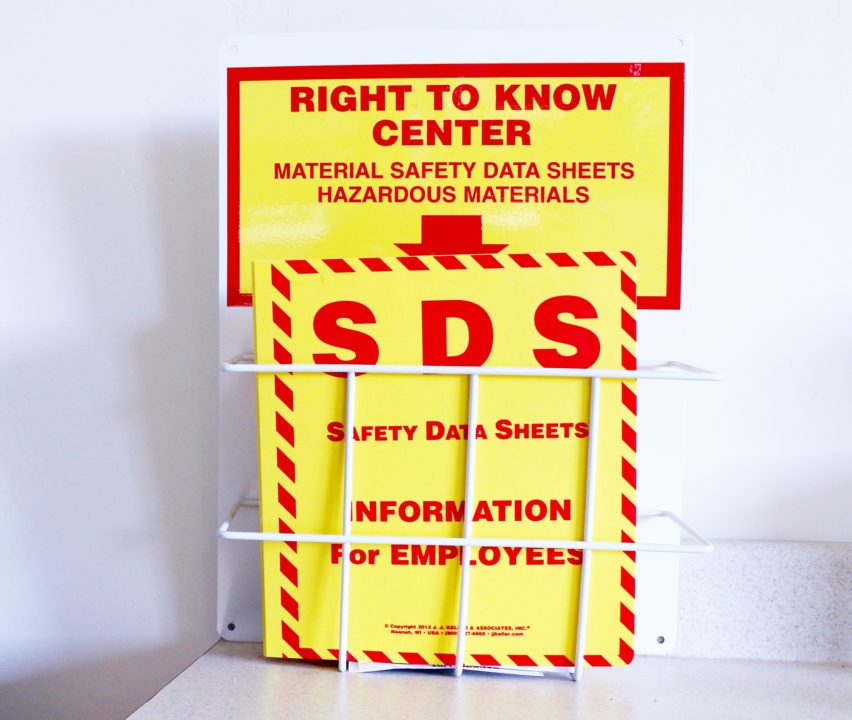The Global Harmonization System (GHS) is a product of the United Nations that embodies an international approach to hazard communication using agreed-upon criteria for classifying hazardous chemicals and a standardized method to communicate the hazards through the use of container labels and Safety Data Sheets (SDS).
The Occupational Health and Safety Administration (OSHA) within the U.S. Bureau of Labor has adopted most – not all – of the provisions of the GHS within its hazard communication regulations (aka HazCom Standard). They are found in Title 29 of the Code of Federal Regulations 1910.1200.
Appendix D to 29 CFR 1910.1200 indicates the required (and suggested) information to include in the SDS and the format. Sections 1-11 and 16 are required, sections 12-15 may be included but are not required.
- Section 1—Identification: Product identifier, manufacturer or distributor name, address, phone number, emergency phone number, recommended use, and restrictions on use.
- Section 2—Hazard(s) identification: All hazards regarding the chemical and required label elements.
- Section 3—Composition/Information on ingredients: Information on chemical ingredients and trade secret claims.
- Section 4—First-aid measures: Required first aid treatment for exposure to a chemical and the symptoms (immediate or delayed) of exposure.
- Section 5—Fire-fighting measures: The techniques and equipment recommended for extinguishing a fire involving the chemical and hazards that may be created during combustion.
- Section 6—Accidental release measures: Steps to take in the event of a spill or release involving the chemical. Includes Emergency procedures, protective equipment, and proper methods of containment and cleanup.
- Section 7—Handling and storage: Precautions for safe handling and storage, including incompatibilities.
- Section 8—Exposure controls/Personal protection: OSHA’s permissible exposure limits (PELs), threshold limit values (TLVs), appropriate engineering controls, and personal protective equipment (PPE).
- Section 9—Physical and chemical properties: The chemical’s characteristics.
- Section 10—Stability and reactivity: Chemical stability and possible hazardous reactions.
- Section 11—Toxicological information: Routes of exposure (inhalation, ingestion, or absorption contact), symptoms, acute and chronic effects, and numerical measures of toxicity.
- Section 12—Ecological information: How the chemical might affect the environment and the duration of the effect.
- Section 13—Disposal considerations—describes safe handling of wastes and methods of disposal, including the disposal of any contaminated packaging.
- Section 14—Transportation information—includes packing, marking, and labeling requirements for hazardous chemical shipments.
- Section 15—Regulatory information—indicates regulations that apply to chemicals.
- Section 16—Other information—includes the date of preparation or last revision.

Post a Comment